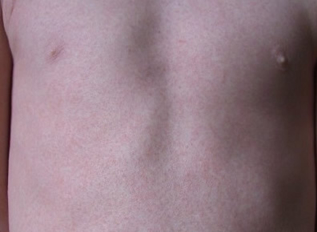These guidelines are based on the guidelines found on the Prodigy web site.
- Pharyngitis is inflammation of the oropharynx but not the tonsils
- Tonsillitis is usually diagnosed if the tonsils are particularly affected
- "Laryngitis" is used if there are few visible signs of infection but the patient complains of soreness lower down the throat, often with a hoarse voice
Background
Acute sore throat is usually due to a viral infection, often as part of an upper respiratory tract infection / flu-like illness, or due to Epstein-Barr Virus (e.g. in glandular fever).
Group A beta-haemolytic streptococcus (GAS) is the most common bacterial cause of sore throat. GAS can be isolated from up to 30% of patients presenting with acute sore throat. However, figures for asymptomatic carriage range from 6% to 40%.
Complications of acute streptococcal sore throat
- Suppurative: Otitis media, sinusitis, peritonsillar abscess (quinsy), cervical adenopathy
- Rheumatic fever and post-streptococcal glomerulonephritis (rare)
- Scarlet fever
- Streptococcal toxic shock syndrome
Assessment
Viral and bacterial sore throat are clinically indistinguishable. Streptococcal infection is likely, if a scarlet fever rash is present.
Throat swabs and rapid antigen tests should not be carried out routinely in sore throat.
Streptococcal serology can identify whether a person has recently been infected with streptococcus, and may be useful for people who remain unwell or develop complications.
Centor criteria
- Tonsillar exudate
- Tender ant. cervical lymphadenopathy/adenitis
- Hx fever (> 38°C)
- Absence of cough
Each of the Centor criteria score 1 point (max score 4).
Score ≤ 2 ≈ 15% likelihood of isolating streptococcus.
Score 3-4 ≈ 32 to 56% likelihood of isolating streptococcus. (consider antibiotics).
Management
- "Sore throat" (pharyngitis, tonsillitis, laryngitis) is usually a self-limiting condition, whether due to viral or bacterial infection
- Explanation, reassurance, and advice on symptomatic treatment are frequently all that is necessary
- Paracetamol is the analgesic drug of choice in sore throat. Ibuprofen is an alternative
- "Gargles" have been poorly researched. Don't use them in children
- If antibiotics are to be commenced, it is reasonable to take a throat swab
Antibiotics are recommended in the following situations:
- Features of marked systemic upset
- High risk groups:
- A history of rheumatic fever
- Centor >2
- Increased risk from acute infection (e.g. diabetes mellitus or immunodeficiency)
- The prevention of cross-infection with group A beta-haemolytic streptococcus in closed institutions (such as barracks, boarding schools)
- The antibiotic of choice is phenoxymethylpenicillin (Amoxicillin is an alternative, but may cause a rash with glandular fever)
- If the patient is penicillin allergy, use Erythromycin [Beware macrolides if on warfarin]
- Please see NCHD.ie
Scarlet fever

- Is an exotoxin mediated disease following Group A streptococcal infection
- The course is usually benign
- Sequelae include rheumatic fever and glomerulonephritis. Other suppurative complications of streptococcal infection may also occur
- The first sign is fever, ± tonsillitis
- The rash develops 12-24 hours after fever onset
- It is a red punctate skin eruption that has a sandpaper-like texture and is prominent in skin creases
- It usually begins below the ears and on the chest and spreads to the abdomen and extremities
- There is a flushed face with circumoral pallor; and a strawberry tongue
- The rash settles down after a week, & is followed by desquamation (pealing of skin)
Diagnosis is clinical. Throat swabs are usually "positive", although remember they can also be positive in individuals with other rashes that aren't scarlet fever, but who are Strep carriers.
DDx sore throat
- Quinsy (trismus)
- Epiglottitis (toxic, stridor, drooling)
- Retropharyngeal abscess (toxic)
- Bacterial tracheitis (toxic, stridor)
- Diphtheria (very rare if immunised)
- These diagnoses should be made clinically
Links
- Toxic shock syndrome
- NCHD (antibiotic guidelines)